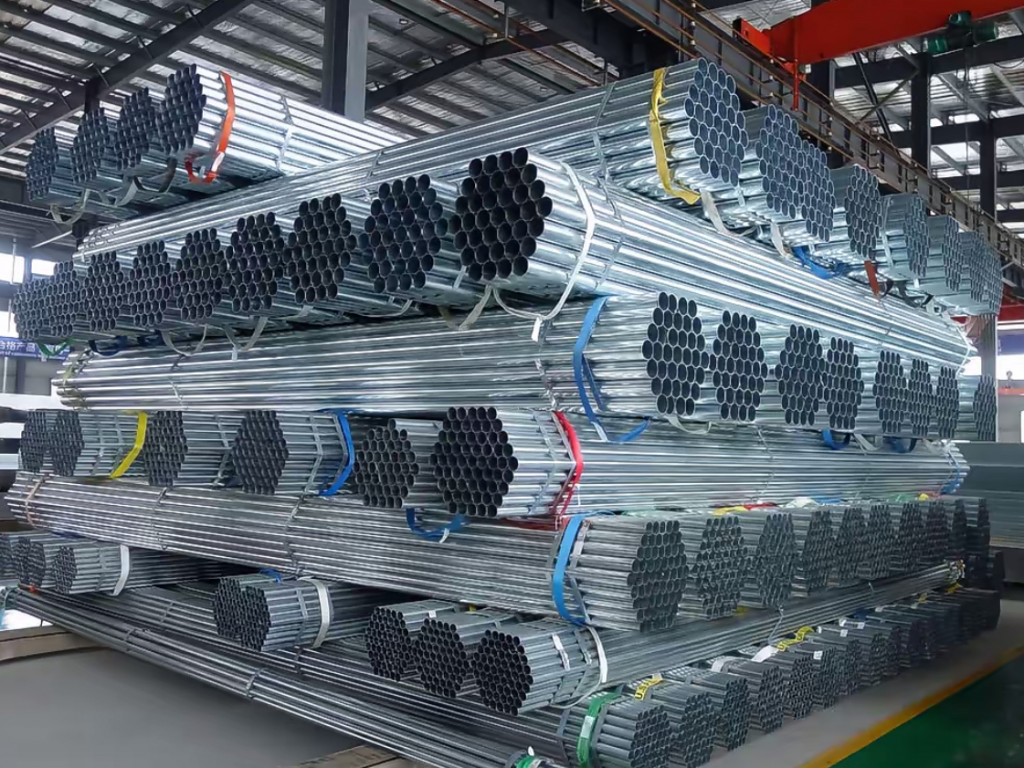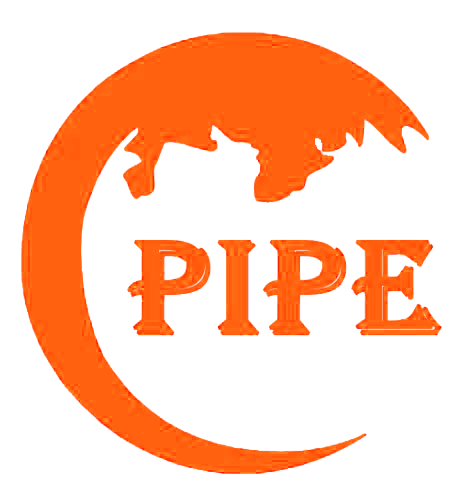Project Info

Galvanized steel pipe
Galvanized steel pipe is a steel pipe that is coated with a layer of zinc on the surface of ordinary steel pipes, mainly used to prevent corrosion of steel pipes and extend their service life. Galvanized steel pipes are widely used in fields such as construction, water supply, natural gas, fire protection, and agricultural irrigation.
Main characteristics of galvanized steel pipes
1. Excellent corrosion resistance: The zinc layer effectively prevents steel pipes from rusting and extends their service life.
2. High strength: The steel pipe substrate has high strength and toughness, suitable for various environments.
3. Easy to install: Galvanized steel pipes are lightweight, easy to connect, and have high construction efficiency.
4. Beautiful and durable: The surface is smooth, the zinc layer is uniform, and the appearance is beautiful and durable.
5. Economical and practical: high cost-effectiveness, low maintenance costs.
Types of galvanized steel pipes
1. Classified by production process:
Hot dip galvanized steel pipe: Immerse the steel pipe in molten zinc solution to form a uniform zinc layer with strong corrosion resistance.
Electroplated galvanized steel pipe: Galvanized on the surface of the steel pipe through electrolytic process, with a thin zinc layer, suitable for light corrosive environments.
2. Classified by purpose:
Galvanized steel pipes for construction: used for building structures, scaffolding, etc.
Galvanized steel pipes for water supply: used for urban water supply and drainage systems.
Galvanized steel pipes for fire protection: used in fire pipeline systems.
Galvanized steel pipes for agriculture: used for agricultural irrigation, greenhouses, etc.
Application fields of galvanized steel pipes
Construction industry: used for building structures, scaffolding, guardrails, etc.
Water supply system: used for urban water supply and drainage pipelines.
Fire protection system: used for fire sprinkler pipelines and fire hydrant systems.
Agricultural irrigation: used for farmland irrigation and greenhouse support.
Natural gas transportation: used for low-pressure natural gas transmission pipelines.
Electrical engineering: used for cable protection conduit.There are many variations of passages of Lorem Ipsum available, but thexyz ud majority have suffered alteration in some form, by injected humour.
- Carbon steel: such as Q235, Q195, suitable for general use.
- Low alloy steel: such as Q345, suitable for high-strength requirements.
- Other materials: customized according to special requirements.
Technical parameters of galvanized steel pipes
Outer diameter range: DN15- DN600 (or customized according to customer needs).
Wall thickness range: 1mm -10mm.
Length: usually 6m, can also be customized according to needs.
Zinc layer thickness:
Hot dip galvanizing: ≥ 65 μ m (according to GB/T 3091 standard).
Electroplated zinc: 5-15 μ m.
7. Execution standards:
National standards: GB/T 3091, GB/T 13793.
American standards: ASTM A53, ASTM A123.
European standards: EN 10255, EN 10305.
8. Production process flow
1. Steel pipe pretreatment: Clean the surface of the steel pipe to remove oil stains and rust.
2. Acid washing: Immerse the steel pipe in acid solution to remove the oxide layer.
3. Auxiliary plating treatment: Apply auxiliary plating agent on the surface of the steel pipe to enhance the adhesion of the zinc layer.
4. Hot dip galvanizing: Immerse the steel pipe in molten zinc solution to form a uniform zinc layer.
5. Cooling: Cool and solidify the galvanized steel pipe.
6. Surface treatment: Passivation, polishing, and other treatments are applied to steel pipes.
7. Quality inspection: Ensure product quality through zinc layer thickness testing, pressure testing, etc.
8. Packaging and shipping: Packaging and transportation are carried out according to customer needs.
Project Information
- Project Category: Rubix carabil tower
- Clients: David Malan
- Project Date: 25 June, 2024
- Avenue End Date: 08 July, 2024
- Locations: NewYork – 4648 Rocky, USA
- Price After: $10 Million
